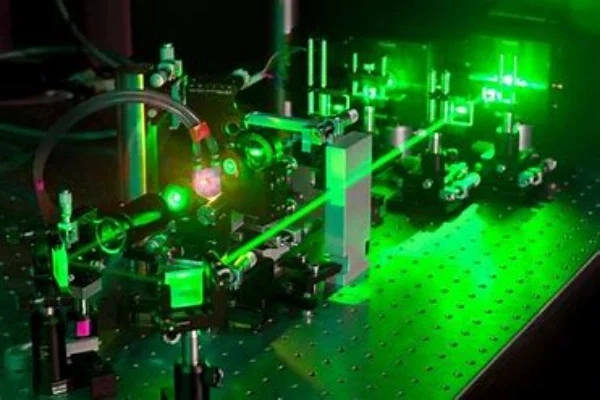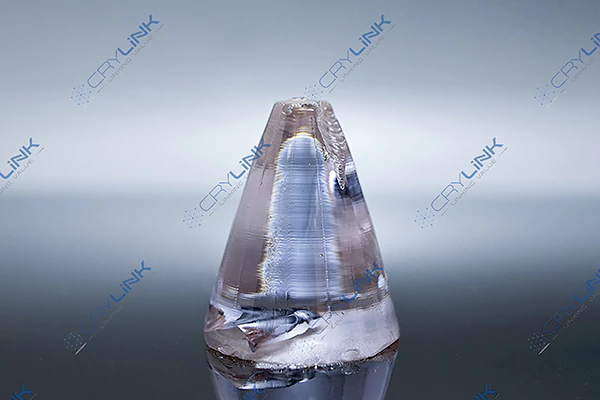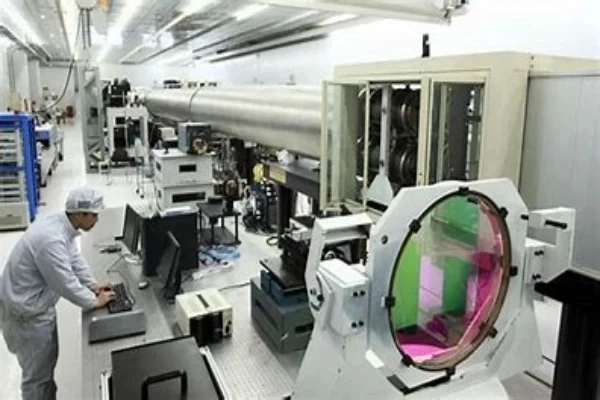Unveiling Solid-state Lasers: Parameters and Characteristics
The march of technological advancement is relentless, and at its forefront, one finds the impressive power of solid-state lasers. These devices, possessing an uncanny blend of precision and potency, have found their way into the most intricate corners of modern-day applications, ranging from the precision of medical treatments to the rigor of scientific research.

But beneath this wide array of applications, what really underscores their preeminence? The answer lies in their fundamental parameters and distinct characteristics that set them apart from other light sources. As we delve deeper, the marvel of solid-state lasers becomes increasingly evident.
Key Parameters of Solid-State Lasers
At the heart of any laser lies its Optical Gain Medium. Acting as the catalyst for the entire lasing process, the gain medium in solid-state lasers is predominantly made of crystalline materials or specially crafted glassy matrices. This component isn’t just a passive participant; its selection carries profound implications for the laser’s performance.

It determines how efficiently the laser operates, the range of wavelengths it can produce, and the maximum power it can achieve. As research continues, the hunt for new and improved gain mediums that can push these boundaries even further remains a key area of focus.
The Pump Source is akin to the fuel that drives a car. Just as a vehicle requires fuel to move, a laser requires energy to emit light. Solid-state lasers are driven to their excited state by an external energy source, aptly named the pump. The choice of this pump source, whether another laser or perhaps a flashlamp, isn’t trivial. It determines several aspects of the laser’s performance, including its operating life, stability, and the consistency of its output.
Lastly, the phenomenon of Mode Locking showcases the finesse with which solid-state lasers operate. Through this technique, these lasers are capable of producing pulses so short that they’re often measured in femtoseconds—a testament to their incredible precision. This ability to generate ultra-short, consistent pulses is indispensable in numerous advanced applications, such as capturing rapid molecular interactions or studying high-speed phenomena.
Main Characteristics of Solid-State Lasers
Beyond the fundamental parameters, solid-state lasers are defined by a set of standout characteristics.
The Broad Wavelength Tunability isn’t just a technical specification—it’s a doorway to versatility. Different applications demand different wavelengths, and solid-state lasers deliver on this front. Whether it’s the specific wavelength needed for a medical imaging technique or the precise color required for a scientific measurement, these lasers can be tuned to the task.
High Peak Power isn’t merely a phrase on a spec sheet. It embodies the capability of solid-state lasers to unleash potent bursts of energy in incredibly fleeting moments. Whether it’s for materials processing tasks that demand high-intensity light or scientific experiments that require powerful yet short-lived bursts, these lasers stand ready to deliver.

And then there’s Beam Quality. Imagine a painter with a brush so fine, every stroke is flawless. In the world of lasers, beam quality is that brush. A superior beam quality implies that the laser light can be tightly focused, enabling extreme precision. Whether it’s targeting individual cells in medical treatments or engraving intricate patterns in materials, the beam’s quality can be the difference between success and subpar results.
In conclusion, solid-state lasers, through their exceptional parameters and characteristics, aren’t just tools; they’re the embodiment of modern technological excellence, continuing to illuminate the path of progress in myriad domains.
Applications Influenced by the Core Parameters and Characteristics
Scientific Research In the expansive realm of scientific inquiry, solid-state lasers have emerged as invaluable assets, heralding a new era of discovery and innovation. Their broad wavelength tunability enables scientists to investigate a vast spectrum of phenomena, from analyzing the chemical composition of distant stars to understanding molecular interactions on Earth.

Furthermore, the unparalleled beam quality these lasers offer ensures precision and reliability. Spectroscopy, a technique that unravels the mysteries of matter by studying interactions between matter and electromagnetic radiation, has particularly benefited. Additionally, the field of particle acceleration, which delves into propelling charged particles to high speeds, now increasingly employs solid-state lasers, accelerating our journey into the subatomic world.
Medical Arena The medical field has witnessed a transformation with the advent of solid-state lasers. Gone are the days of prolonged surgical procedures with extended recovery times. With the high peak power that these lasers bring to the table, surgeries have become far more precise. This precision translates to minimized tissue damage, leading to faster recovery times and a significantly reduced risk of post-operative complications.

Ophthalmology has seen tremendous advancements with LASIK eye surgeries, granting clear vision to countless individuals. Dermatology employs these lasers for treatments ranging from scar removal to combating the effects of aging. Furthermore, in oncology, they’re used to target and destroy cancerous cells with pinpoint accuracy, minimizing harm to surrounding healthy tissue.
Industrial Domain The industrial world stands as a testament to the versatility of solid-state lasers. These tools have become synonymous with efficiency and quality. Whether it’s the intricate art of engraving, where minute details matter, or material processing where precision cuts and welds can determine the integrity of a product, solid-state lasers have proven indispensable. Their ability to concentrate intense energy onto tiny areas ensures that the finished products are not only of superior quality but also crafted with impeccable detail.
Military and Defense In the high-stakes environment of military and defense, reliability and effectiveness are paramount. Solid-state lasers, with their consistent high power and compact form factor, have proven to be game-changers. Rangefinding, a crucial aspect of modern warfare, has seen leaps in accuracy thanks to these lasers. Target designation, which involves marking a target for precision-guided munitions, benefits from their pinpoint accuracy.

Beyond these applications, the advent of direct energy weaponry, which uses highly focused energy to damage or destroy enemy equipment and personnel, speaks volumes about the potential and power of solid-state lasers. As technology continues to advance, these lasers are set to play an even more pivotal role in shaping the future of defense strategies globally.
The Way Forward with Solid-state Lasers
In today’s fast-evolving technological landscape, solid-state lasers stand out as a beacon of innovation, driving advancements in various fields ranging from medicine to defense. Delving deep into the core parameters and characteristics of these lasers is not just a matter of academic interest; it is a crucial step towards harnessing their full potential and ensuring they are utilized to their utmost capabilities.
The optical gain medium, pump source, and mode locking are just a few of the fundamental parameters that define the performance of solid-state lasers. A nuanced understanding of these parameters can pave the way for fine-tuning their output, achieving better efficiency, and expanding their wavelength range. This, in turn, opens the doors for novel applications that were previously thought to be beyond reach.
As we stand on the cusp of a new era in laser technology, researchers and industry experts are continuously pushing the boundaries. With each breakthrough, we are witnessing a reduction in size, making these lasers more portable, while simultaneously achieving an increase in power output. This balance of portability and power is what sets the stage for them to become integral tools in remote medical procedures, field-based scientific experiments, and portable defense mechanisms.
Moreover, the ongoing research in the field aims to make solid-state lasers more energy-efficient and cost-effective. Such strides will undoubtedly democratize access to these tools, ensuring that even sectors with limited resources can benefit from the advancements they offer.
In conclusion, the journey with solid-state lasers is an ongoing one. With each passing day, as we deepen our understanding and refine their design, we are inching closer to a world where these lasers touch every facet of our lives, from healthcare to communication, research to entertainment. The future is bright, and solid-state lasers promise to be a guiding light leading the way.
Conclusion
Solid-state lasers, with their robust parameters and distinct characteristics, continue to shape various fields. Recognizing the intricacies of these lasers will not only optimize their current applications but also pave the way for future innovations.
Frequently Asked Questions (FAQs)
1. What primarily distinguishes a solid-state laser from other types? The optical gain medium, typically crystalline or glassy, sets solid-state lasers apart.
2. Why is mode locking crucial in solid-state lasers? Mode locking helps produce ultra-short pulses, essential for applications requiring high temporal precision.
3. How have solid-state lasers impacted medical surgeries? They’ve revolutionized procedures by ensuring precision, reducing invasiveness, and facilitating quicker patient recovery.
4. Can solid-state lasers function continuously? While some solid-state lasers can operate continuously, many are designed for pulsed operations due to their high peak powers.
5. Are solid-state lasers used in everyday products? Yes, they are found in many everyday devices, including DVD players and barcode scanners.

Frank
Frank graduated from the University of Shanghai for Science and Technology, majoring in optics. As a technical engineer at Crylink Company, he deeply understands crystal materials and laser components.
Related Video(s) with this Article
Related Product(s) with this Article
Related Application(s) with this Article
